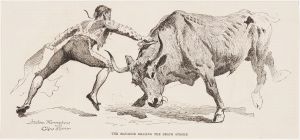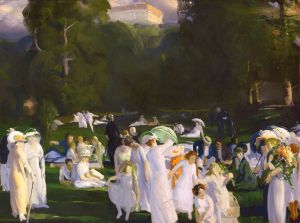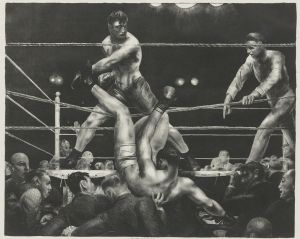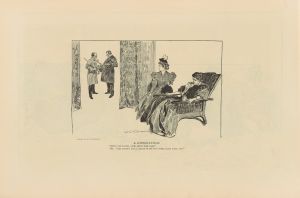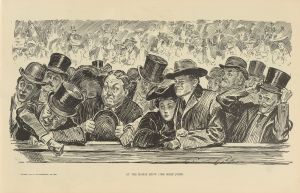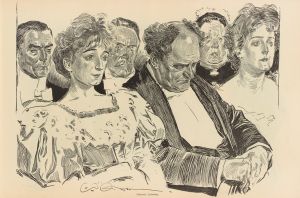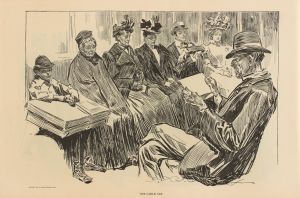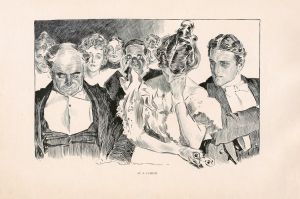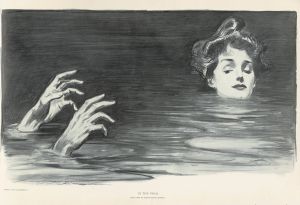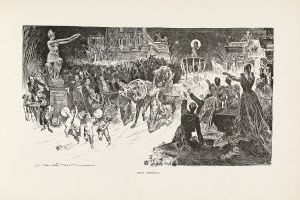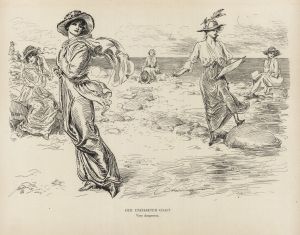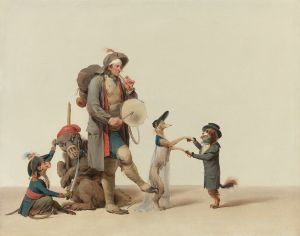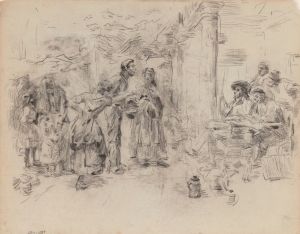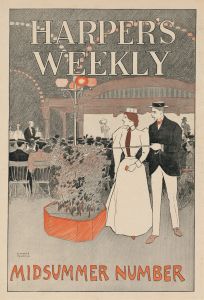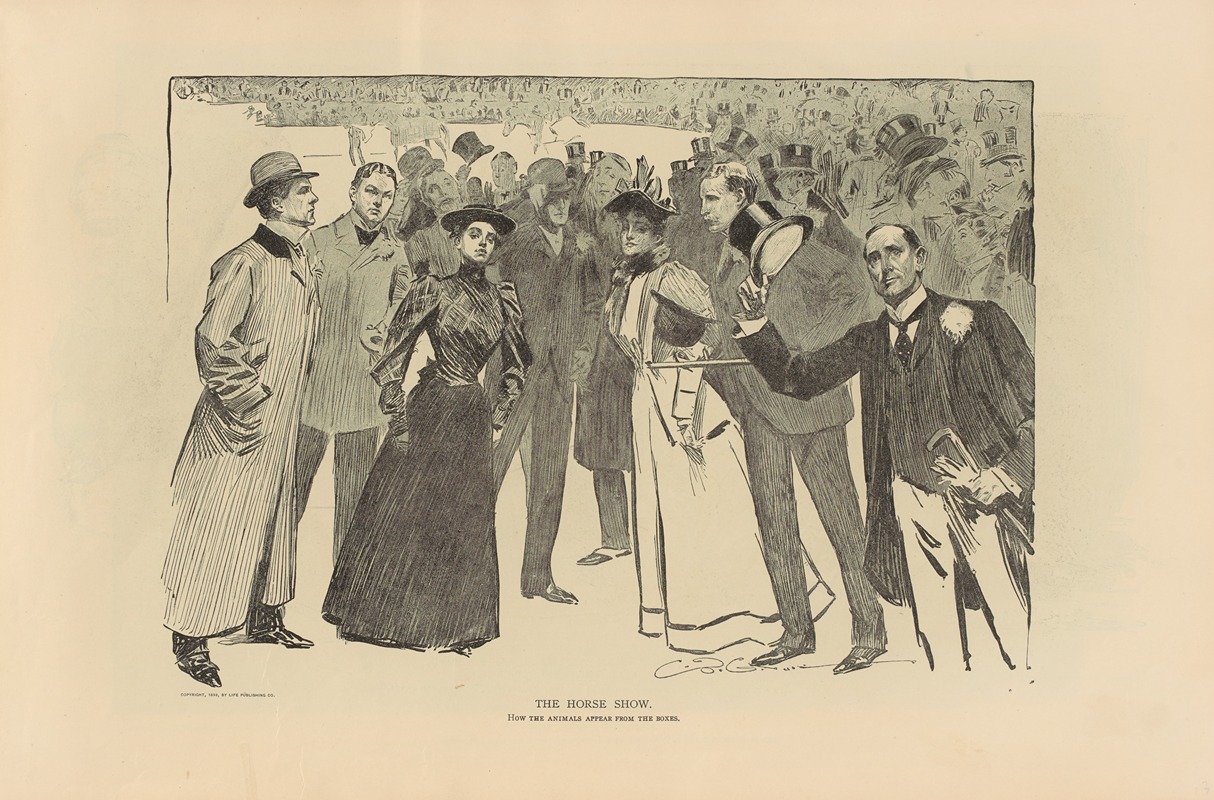
The horse show. How the animals appear from the boxes
A hand-painted replica of Charles Dana Gibson’s masterpiece The horse show. How the animals appear from the boxes, meticulously crafted by professional artists to capture the true essence of the original. Each piece is created with museum-quality canvas and rare mineral pigments, carefully painted by experienced artists with delicate brushstrokes and rich, layered colors to perfectly recreate the texture of the original artwork. Unlike machine-printed reproductions, this hand-painted version brings the painting to life, infused with the artist’s emotions and skill in every stroke. Whether for personal collection or home decoration, it instantly elevates the artistic atmosphere of any space.
Charles Dana Gibson was an influential American illustrator, best known for his creation of the "Gibson Girl," a representation of the idealized American woman at the turn of the 20th century. His work was widely published in magazines such as Life, Harper's Weekly, and Scribner's, and he played a significant role in shaping the visual culture of his time.
"The Horse Show. How the Animals Appear from the Boxes" is one of Gibson's many illustrations that capture the social scenes and cultural nuances of his era. This particular piece, like much of Gibson's work, is characterized by its detailed line work and keen observation of social settings. It likely depicts a scene from a horse show, a popular social event during the late 19th and early 20th centuries, where the elite and fashionable members of society would gather to watch equestrian competitions.
Gibson's illustrations often contained subtle social commentary, and "The Horse Show" might reflect the societal norms and behaviors of the upper class during that period. His ability to capture the essence of social gatherings with humor and insight made his work both entertaining and thought-provoking.
While specific details about "The Horse Show. How the Animals Appear from the Boxes" are limited, it can be inferred that the illustration showcases Gibson's talent for portraying the interactions and attitudes of people in a public setting. His work often highlighted the contrast between appearances and reality, a theme that resonated with audiences of his time.
Gibson's illustrations were not just art; they were a form of storytelling that provided commentary on the social dynamics of his day. His ability to encapsulate the spirit of an era through his drawings made him a significant figure in American art and culture. The popularity of his work, including pieces like "The Horse Show," contributed to the widespread recognition of his artistic style and the cultural impact of his illustrations.
Overall, Charles Dana Gibson's work remains an important part of American art history, offering insights into the social fabric of the late 19th and early 20th centuries. His illustrations continue to be appreciated for their artistic merit and their ability to capture the complexities of social life during his time.





